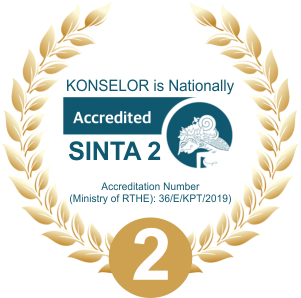The correlation between children’s song and memorizing vocabulary to young learner as foreign language on kindergarten
 ),
), (1) Institut Agama Islam Al-Khairat Pamekasan
 Corresponding Author
Corresponding Author
Copyright (c) 2021 Miftahul Muttaqiin
DOI : https://doi.org/10.24036/0202094111580-0-00
Full Text:
 Language : en
Language : en
Abstract
Keywords
References
Abate, S. T., Tachbelie, M. Y., Melese, M., Abera, H., Abebe, T., Mulugeta, W., Assabie, Y., Meshesha, M., Afnafu, S., & Seyoum, B. E. (2020). Large vocabulary read speech corpora for four ethiopian languages: Amharic, tigrigna, oromo and wolaytta. Proceedings of The 12th Language Resources and Evaluation Conference, 4167–4171.
Akbary, M., Shahriari, H., & Hosseini Fatemi, A. (2018). The value of song lyrics for teaching and learning English phrasal verbs: a corpus investigation of four music genres. Innovation in Language Learning and Teaching, 12(4), 344–356.
Albaladejo, S. A., Coyle, Y., & de Larios, J. R. (2018). Songs, stories, and vocabulary acquisition in preschool learners of English as a foreign language. System, 76, 116–128.
Apsari, Y. (2017). The use of picture series in teaching writing recount text. Eltin Journal, Journal Of English Language Teaching In Indonesia, 5(2), 51–56.
Azizah, S. (2013). English Vocabulary. STAIN Pamekasan Press.
Butler, Y. G. (2018). The role of context in young learners’ processes for responding to self‐assessment items. The Modern Language Journal, 102(1), 242–261.
Cam, L., & Tran, T. M. T. (2017). An evaluation of using games in teaching English grammar for first year English-majored students at Dong Nai Technology University. International Journal of Learning, Teaching and Educational Research, 16(7), 55–71.
Carlini, N., Liu, C., Erlingsson, Ú., Kos, J., & Song, D. (2019). The secret sharer: Evaluating and testing unintended memorization in neural networks. 28th {USENIX} Security Symposium ({USENIX} Security 19), 267–284.
Creswell, J. W., & Creswell, J. D. (2017). Research Design: Qualitative, Quantitative, and Mixed Methods Approaches. Sage Publications.
Ennis, C. D. (2017). Educating students for a lifetime of physical activity: Enhancing mindfulness, motivation, and meaning. Research Quarterly for Exercise and Sport, 88(3), 241–250.
Geuens, M., & De Pelsmacker, P. (2017). Planning and conducting experimental advertising research and questionnaire design. Journal of Advertising, 46(1), 83–100.
Hamidova, S. (2020). Vocabulary Helps to Enhance of English Leraning: A word is a microcosm of human consciousness. Архив Научных Публикаций JSPI.
Jabbarova, A. (2020). The Importance of Evaluating Students’speaking Skills. Архив Научных Публикаций JSPI.
Kang, Y., & Ritzhaupt, A. (2021). A comparative study of game-based online learning in music appreciation: An analysis of student motivation and achievement. Journal of Educational Multimedia and Hypermedia, 30(1), 59–80.
Keblusek, L., Giles, H., & Maass, A. (2017). Communication and group life: How language and symbols shape intergroup relations. Group Processes & Intergroup Relations, 20(5), 632–643.
Laufer, B. (2017). From word parts to full texts: Searching for effective methods of vocabulary learning. SAGE Publications Sage UK: London, England.
Legacy, J., Zesiger, P., Friend, M., & Poulin-Dubois, D. (2018). Vocabulary size and speed of word recognition in very young French–English bilinguals: A longitudinal study. Bilingualism: Language and Cognition, 21(1), 137–149.
Leppink, J. (2019). Statistical methods for experimental research in education and psychology. Springer.
Lo, R., & Li, H. (1998). Songs enhance learner involvement. English Teaching Forum, , 36, 8-11, 21. Retrieved from http://iteslj.org/Articles/Schoepp-Songs.html
Ma, W., Fiveash, A., Margulis, E. H., Behrend, D., & Thompson, W. F. (2020). Song and infant-directed speech facilitate word learning. Quarterly Journal of Experimental Psychology, 73(7), 1036–1054.
McLaren, P. & C. Lankshear. (1994). Politics of liberation: Paths from Freire. London: Routledge.
Medina, S. (1993). The effect of music on second language vocabulary acquisition. FEES News (National Network for Early Language Learning, 6(3), 1-8. Presented at the Annual Meeting of the Teachers of English to Speakers of Other Languages, 1990.
O’Connor, R. E., Beach, K. D., Sanchez, V., Bocian, K. M., Roberts, S., & Chan, O. (2017). Building better bridges: Teaching adolescents who are poor readers in eighth grade to comprehend history text. Learning Disability Quarterly, 40(3), 174–186.
Pearson, P. D. (2019). Time, Complexity, and the Enduring Importance of Words. Learning through Language: Towards an Educationally Informed Theory of Language Learning, 159.
Sala, G., & Gobet, F. (2020). Cognitive and academic benefits of music training with children: A multilevel meta-analysis. Memory & Cognition, 48(8), 1429–1441.
Setiyadi, A. G. (2020). Teaching English as a foreign language.
Sheskin, D. J. (2020). Handbook of parametric and nonparametric statistical procedures. crc Press.
Simpson, J., & Wigglesworth, G. (2019). Language diversity in Indigenous Australia in the 21st century. Current Issues in Language Planning, 20(1), 67–80.
Susanto, A. (2017). The teaching of vocabulary: A perspective. Jurnal Kata: Penelitian Tentang Ilmu Bahasa Dan Sastra, 1(2), 182–191.
Uzer, Y. V. (2018). The Correlation between Vocabulary Mastery and English Speaking Ability of the Tenth Grade Students of Senior High School 12 Palembang. ANGLO-SAXON: Jurnal Ilmiah Program Studi Pendidikan Bahasa Inggris, 8(2).
Ulate, N. V. (2008). Using songs to improve EFL students' pronunciation. Congress lnternational de Lillgiiística Aplicada, (93-108). Costa Rica.
Wagner, J. B. (2019). Children are not small adults: specific findings in statin exposure and response in a growing population. Clinical Pharmacology and Therapeutics, 106(2), 278.
Warden, P. (2018). Speech commands: A dataset for limited-vocabulary speech recognition. ArXiv Preprint ArXiv:1804.03209.
Xoshimova, D., & Tadjibayev, M. (2020). The Social Dimensions of Understanding the Art of Literary Language. European Journal of Research and Reflection in Educational Sciences, 8(5), 32–37.
Yang, Liu (Leslie).(2011). Using music in English as a second language classroom. (Unpublished Thesis). Universityof Wisconsin-Platteville. Retrieved form: ttp://webcache.googleusercontent.com/search?q=cache:9arXJVo3ih8J:https://minds. wisconsin.edu/bitstream/handle/1793/52409/Yang,%2520Liu.pdf%3Fsequence%3D1 +&cd=1&hl=en&ct=clnk&gl=il
 Article Metrics
Article Metrics
 Abstract Views : 802 times
Abstract Views : 802 times
 PDF Downloaded : 170 times
PDF Downloaded : 170 times
Refbacks
- There are currently no refbacks.
Copyright (c) 2021 Miftahul Muttaqiin

This work is licensed under a Creative Commons Attribution 4.0 International License.







